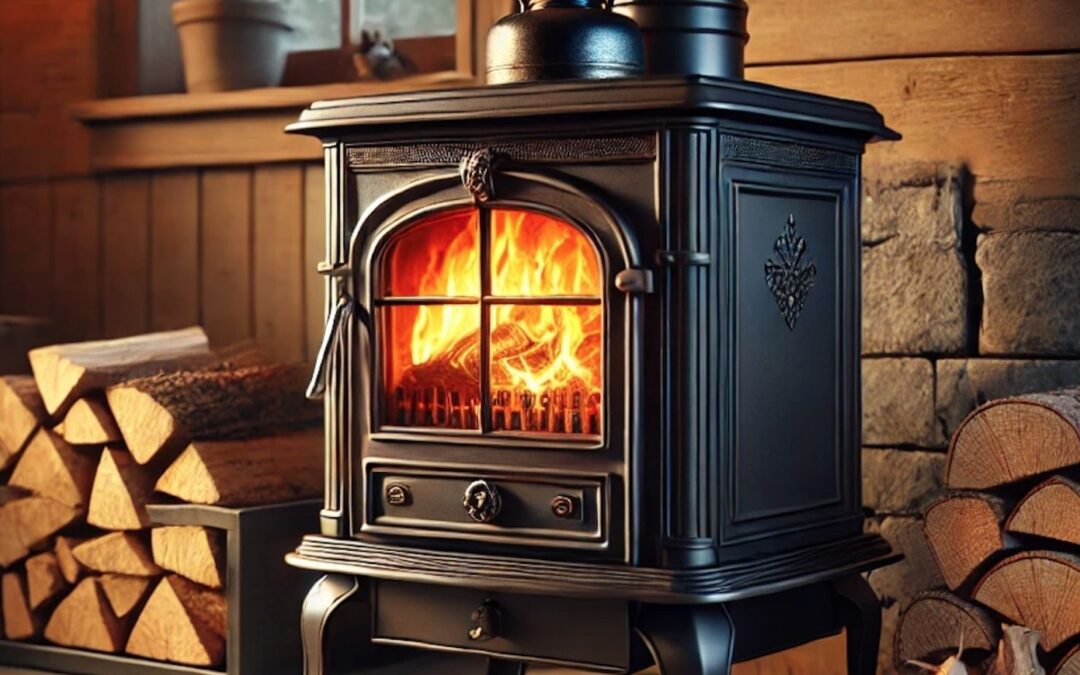For centuries, a wood-burning stove has been a household appliance commonly used for heating. Its steel or iron case generates heat by burning wood fuel in a sealed chamber. At times, with the appearance of heat pumps, electric heaters, or boiler heat pumps were buried into oblivion. Yet, that’s false. Modern cases with advanced wood burner vents, open or closed, are on the rise. They can be placed anywhere if gases and fumes are drawn away.
Wood Burning Stoves and Related Misconceptions
There’s a popular belief that wood-burning stoves affect indoor air quality. Yet, after examining all previous studies, no evidence of that was found. On the contrary, several findings deny adverse indoor effects related to modern burning stoves:
- They don’t cause health issues: According to Dr. Lea-Langton, who studied major published sources, there is no scientific evidence that modern wood-burning stoves are deleterious to human health.
- They do not provoke asthma: There are no direct connections between wood-burning stoves and asthma risks. Thus, any fears regarding provoked respiratory diseases are unjustified.
- They improved indoor air quality. This is only the case when they are used properly. Thus, when a stove is operating, a natural draft is created. It pulls the air out from the room and the outside, adding to a healthier indoor habitat.
- They are safer than other sources of heat. Cooking, for instance, releases higher levels of particle pollution since it includes grilling and cooking, which have potentially higher health risks.
Wood Burning Stoves and Energy Efficiency
Profound research started in 2017. With it, the stove industry decided to reply to laws for solid fuel heating appliances that were supposed to come into force in January 2022. According to the law, to comply with the EU 2015/1185, heating cases had to become more energy-saving. New regulations wanted to see the minimum increase of the appliance efficiency that would equal 10%. Moreover, the same regulations imposed lower emissions of CO, PM, NOx, and OGCs.

What did the new improved efficiency mean? It meant that householders could now get more heat from using less wood fuel. Thus, they could survive through harsh winter months with less money spent.
To compare, an open fire requires sixteen logs to produce 4kW of heat in five hours. At the same time, a modern wood-burning stove requires five logs for the same result, which is a 69% reduction.
Stove production, however, doesn’t stay in one place. Modern stoves can achieve an 80% efficiency. This means that 80%+ of logs used are converted to heat. At the same time, an open fire achieves only a 25% efficiency.
6 Reasons Why Choose a Wood-Burning Stove
It’s worth hearing why a wood burner is one of the most optimal additions to one’s home during cold months. There are a lot more reasons than those 6 you’ll read below. Yet, these are the core ones:
- Environmental Friendliness
Opponents argue that burning logs produces carbon dioxide. And they’re right. Yet, it is balanced by the carbon dioxide trees absorb while growing. So, logs become carbon-neutral heating options. Moreover, a modern wood-burning stove cuts down one’s dependence on exhaustible sources of energy. In the long run, this is environment friendlier.
- Cost Efficiency
If we compare wood-burning stoves to gas/electric heaters, the latter’s initial investment is lower, but ongoing fuel costs are higher. Wood is included in the list of renewable energy sources and is often locally sourced, more sustainable, and low-priced. According to the SIA, a log burner’s running cost is 1/3 of the cost of an electric heating system. Also, it is 13% less than that of a gas system.
- Backup Heating
Many households consider wood-burning stoves as a backup source of heating when power is off. Such stoves don’t rely on gas or electricity. Once you provide enough logs or bricks, you can keep your house comfortable and warm. For many homeowners, wood-burning stoves mean their independence from energy providers, emergencies, power outages, and storms.
- Aesthetic Appeal
Modern stoves add aesthetic appeal to a place. Like fireplaces, they create a comfortable and inviting atmosphere with their wood fire crackling and flame dancing. Besides, the variety of modern stoves, sizes, designs, and styles allow you to choose the type that complements your home most: rougher-edged, smooth-edged, cast iron and steel, etc.
- Wellbeing Improvement
Wood-burning cases are called mood enhancers, especially for those, who like spending cold nights in front of a fire set. A stove delivers much heat and light to lift one’s mood and make one’s home a much happier place. It’s a fact that a lit fire decreases blood pressure and allows one to slow down, and think clearly. And, of course, it adds to one’s feelings of security and comfort.
- Cooking Options
And even though this is a lesser-known benefit of a wood-burning stove, it’s still here. Some stove models are designed for cooking and baking, too. They have built-in cooktops and stoves where you can cook snacks. This is a perfect option for cozy evenings or power outage hours. Don’t forget about the unique flavor the food gets when you’re cooking on a wood-burning stove.
Summing Up
Wood-burning stoves have many benefits. This is the reason why they are now competing with electric and gas heaters. But what neither a gas nor electric heater can achieve is to become a new centerpiece, encouraging friends and family to get together and enjoy their time. This is where a wood-burning stove always wins.


